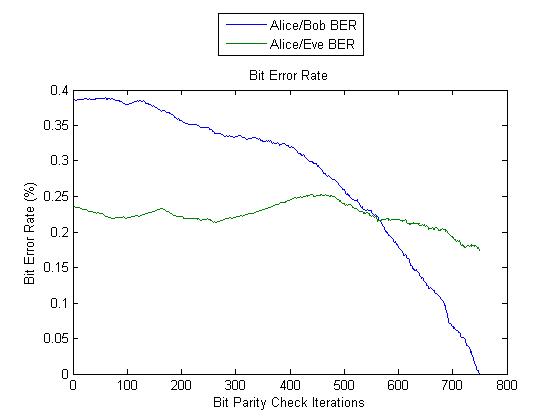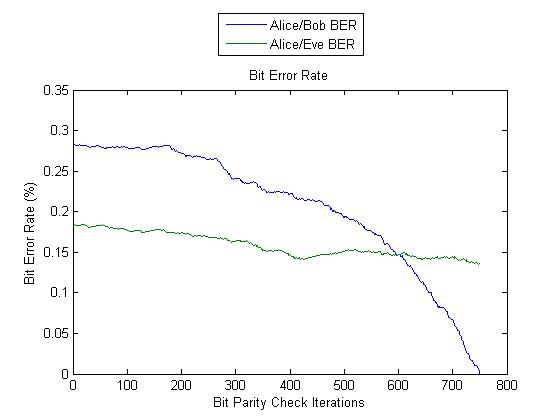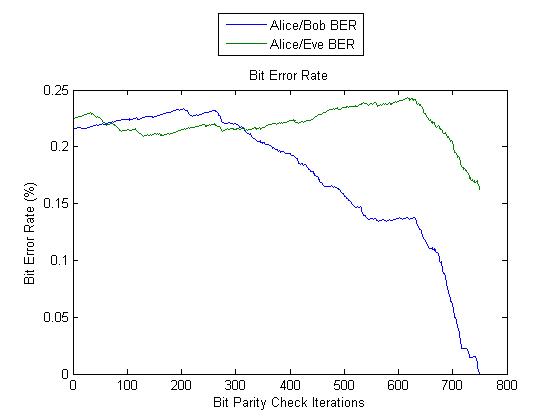Timing Based Encryption: Test Case 2
Test Case 2: Alice, Bob and Eve all on same network[edit]
This was the second test done on the timing based protocol, and was conducted using three machines - representing Alice, Bob and Eve respectively running three python scripts: AliceTS.py, BobTS.py, EveTS.py. These scripts recorded the round trip times - and these round trip times were subsequently fed into a Matlab file for post analysis. The scripts and Matlab file are available here and here respectively. These machines were all on the same network, and thus the round trip times which they recorded were < 1ms.
Test Run 1[edit]
In this test run, the Eve bit error rate began, as usual, lower than the Bob/Alice bit error rate. However, as usual again, the Bob/Alice bit error rate dropped at a much quicker rate than Eve's, and they fully reconciled while Eve's was still at 20%.
Test Run 2[edit]
The next test run began showed extremely similar results, except these were slightly worse as the Eve bit error rate began slightly lower, and dropped to 15% rather than 20% as reconciliation finished.
Test Run 3[edit]
The next test showed extremely favourable results for the first 75% of the iterations, as the eavesdropper bit error rate was rising steadily, however a heavy drop at the end lowered the Eve bit error rate to approximately 15%. This was still an extremely good result though.
Summary of Results[edit]
As expected, the protocol worked perfectly well on LAN. Surprisingly, the LAN results actually presented better than the Internet results. This could be due to the fact that the round trip time recorded by every party all going to be extremely small (<1ms as noted before). Therefore, any randomness which is present due to the switching in the router and any sending delays is going to be extremely noticable and perhaps the randomness present in the LAN network, is unexpectedly larger than the randomness over the internet.
See also[edit]
- Timing-based key agreement
- Timing Based Encryption: Test Case 1
- Timing Based Encryption: Test Case 2
- Timing Based Encryption: Test Case 3
- Timing Based Encryption: Test Case 4
- Timing Based Encryption: Test Case 5
- Geometric Algebra
- CLUViz Geometric Algebra Animation Software
- Secure communications without key exchange (main page)
- Secure communications without key exchange? 2013 weekly progress
- Proposal Seminar 2013: Secure communications without key exchange?
- Final Seminar 2013: Secure communications without key exchange?
- Semester A Progress Report 2013 - Secure communications without key exchange?
- Semester B Final Report 2013 - Secure communications without key exchange? 2013
- YouTube Videos


